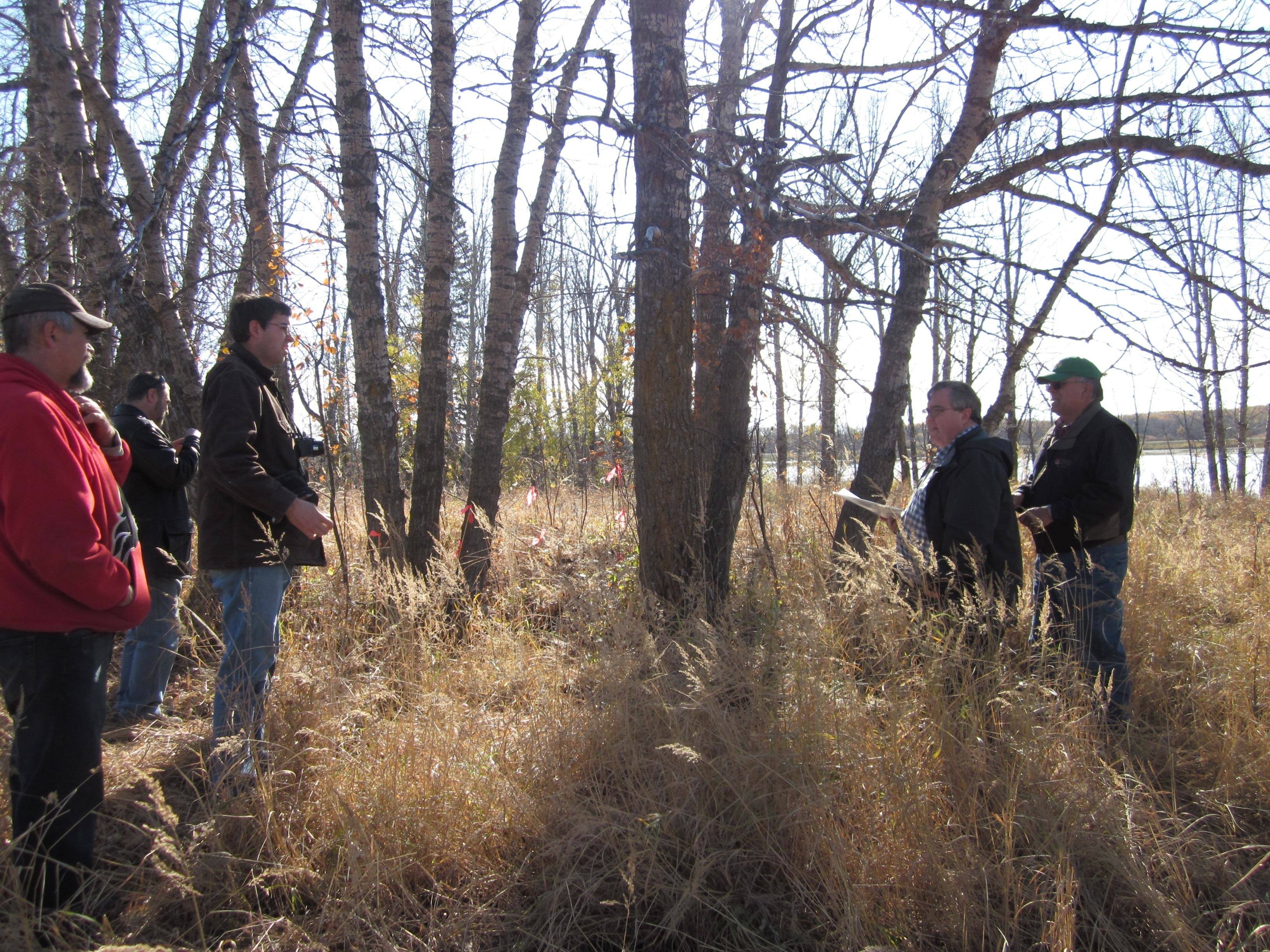The picture of what happened to Jewish settlers who tried in vain to make a life for themselves near Pine Lake in the late 19th century is becoming clearer.
It’s nearly impossible to believe such a picturesque site holds such tragic memories. Blank’s Lake, located near Pine Lake is hardly noticed by motorists speeding up and down Hwy. 42 southeast of Red Deer.
It was here in the early 1890s that some 70 Jewish families tried to create brighter futures after fleeing their native Russia to escape anti-Jewish pogroms. Pogroms were riots aimed against particular groups. The term was originally used to describe violence against Jews.
“Because of the violence they had faced before, they were a little bit leery about living in an established, populated area,” explains local historian Michael Dawe. “They were clustered about Blank’s Lake and another nearby called Grassy Lake, a little bit to the south.”
Dawe says the settlers likely chose the area because it would have allowed for the establishment of a community similar to the ‘shtetl’ or rural villages in the Jewish areas of Russia and the Ukraine. But dreams of starting new lives in Central Alberta were met with prejudice and disaster.
“At the time they came, Central Alberta was under a cold drought. There were killing frosts in early August. They put in a crop of oats and potatos, but were frozen out.”
Government officials who were supposed to be helping the settlers also proved extremely slow to offer assistance. Cool indifference often boiled over into outright prejudice. “You start to see all these reports by these senior government officials and they are blatantly anti-Semitic.”
One of them said something about the settlers having money stashed away somewhere. “Another said ‘They had some potatoes and fish so there wasn’t any danger of them starving.’ Well, they were starving.”
Dawe also tells of a story about the community’s Rabbi buying a horse to help with transportation, and a gun for hunting. But once back in the community, he dropped the gun which went off and killed the horse. The people were nearing the end of what little money they had left.
Over those years, the weather never did seem to cooperate either, remaining stubbornly cold and dry. Prairie fires were a frequent threat. By 1896 the numbers of Jewish families had dwindled considerably. After desperately trying to survive in the region surrounding Blank’s Lake, the families finally disappeared altogether.
Today, all that points to their time there are tiny dug-outs near the lake signifying where their shacks stood. One of the most noticeable dug-outs isn’t far from the shores of Blank’s Lake. It marks where the Rabbi lived, and the lake is named in his honour.
To a large extent, it wasn’t known what became of the community. Until this year.
Last spring, Dawe traveled to Ottawa and found censuses that shed light on the identities of some of the settlers. At last, he learned the first name of Rabbi Blank – Abraham. “There were two lists where they enumerated who was in the colony, with the names of the heads of the households.”
Dawe also learned that some of them moved to Hirsch, Saskatchewan where there was another Jewish settlement. Others started new lives in such faraway locales as Illinois and California. “Now that we have names, it’s like a big door-opener. We’re finding out land titles with names of the families.”
Rabbi Blank ended up in Winnipeg, where he passed away in 1928 at the age of 85 years. Dawe and other researchers are hoping to delve further into his history, such as what community he was from back in the Jewish part of the Russian empire.
Meanwhile, plans for further examination of the sites around Blank’s Lake and Grassy Lake are planned for next year. He also hopes that potential gravesites can be identified. “There are a couple possible spots, one being south of where the Grassy Lakes shacks were.
“That will need more investigation such as ground radar.
“We also don’t know a lot about current descendents, although we are working to see if we can establish where some of them are.”
Meanwhile, the legacy of the Jewish settlers of more than a century ago lives on. Documents relating to the settlers are on permanent display in the Pine Lake Hub Community Hall. Holy Trinity Church near Pine Lake also bears a small Star of David on its bell tower. It’s likely a kind of tribute to the Jewish community thanks to kind neighbours — like the Alford family — who did try to help.
For Dawe, there is much about the story he finds personally fascinating. And although many questions remain, pieces of the puzzle are coming together.
“But there’s still that element of mystery. Who were they exactly? Where did they come from and where did they go? What happened to them?
He also points out that much of what we read about early settlers was written from the point of view of those who ‘made it’. But there are plenty of stories of those who fought to make it and for whatever reason just couldn’t.
“These people really suffered. And lots of people, when they came out here, had hard times. A lot of people came, tried to make a go of it, failed, and left. We don’t have their stories because they left, and we don’t know what happened to them.”
Down the road, Dawe would like to see some kind of permanent marker near the spot to commemorate the community — something that would indicate that 120 years ago this was the site of Alberta’s first Jewish agricultural colony. It didn’t end well, but it’s an important part of local history just the same. “It’s a fascinating story, and one that is still unfolding.”
editor@reddeerexpress.com



